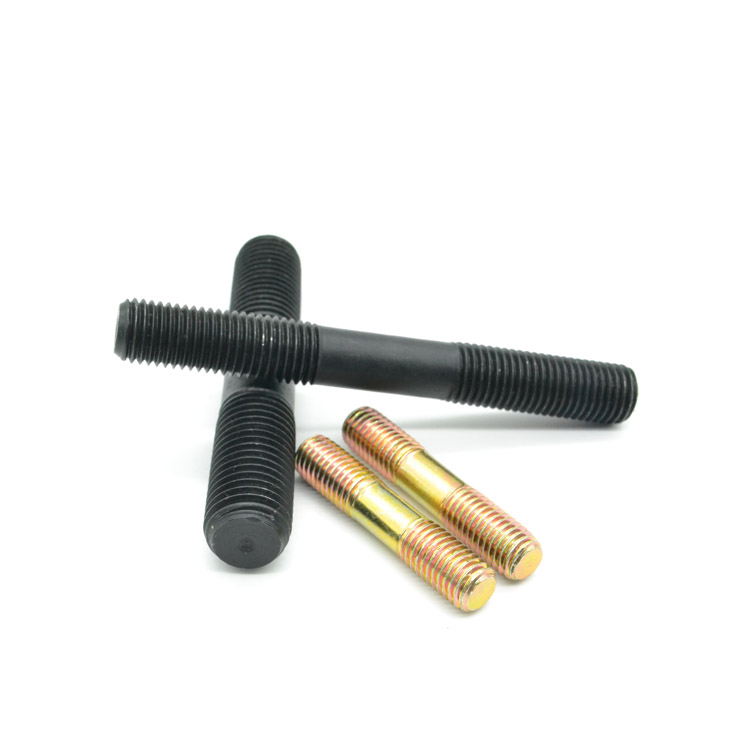Understanding the Importance of Double Sided Stud Bolts in Engineering Applications
ઓક્ટોબર . 14, 2024 08:00 Back to list
Understanding the Importance of Double Sided Stud Bolts in Engineering Applications
Understanding the Importance of Double-Sided Stud Bolts
In various industrial applications, fasteners play a crucial role in ensuring the integrity and durability of structures. Among these, double-sided stud bolts have emerged as a significant component in many engineering and construction projects. This article will delve into the characteristics, applications, and advantages of double-sided stud bolts, shedding light on why they are favored in specific scenarios.
What is a Double-Sided Stud Bolt?
A double-sided stud bolt is a type of fastener that features threads on both ends, making it distinct from standard bolts, which typically have a head on one end. The threaded ends enable the bolt to be embedded in a material while allowing additional components to be attached on both sides. This design facilitates the creation of a secure and strong joint, as it distributes the load evenly across the fasteners.
Characteristics of Double-Sided Stud Bolts
Typically, double-sided stud bolts are made from corrosion-resistant materials such as stainless steel, carbon steel, or other alloys, depending on the specific requirements of the application. They come in various sizes and grades, allowing engineers and designers to select the appropriate stud bolts for their needs. The thread pitch and length can also vary, allowing for customization to suit specific applications.
One of the key characteristics of these bolts is their ability to handle high tensile strength. This makes them suitable for heavy-duty applications where robustness is essential. Additionally, the dual-thread design allows for easier alignment of components during assembly, reducing installation time and effort.
Applications of Double-Sided Stud Bolts
Double-sided stud bolts are used in a broad range of industries, including construction, manufacturing, and automotive. Here are some specific applications
1. Structural Engineering In buildings and bridges, double-sided stud bolts are often used to connect beams, columns, and trusses. Their strength and durability ensure that structural integrity is maintained over time.
2. Marine Applications In shipbuilding, these bolts are used in securing various components and systems, from engine mounts to hull assemblies, where moisture resistance is paramount.
famous double sided stud bolt

4. Automotive Industry Within automotive manufacturing, these fasteners are commonly utilized in assembling engine components or chassis, where precise alignment and secure fastening are critical.
5. Aerospace The aerospace sector also employs double-sided stud bolts in assembling various aircraft components, ensuring lightweight yet robust connections that can withstand extreme conditions.
Advantages of Double-Sided Stud Bolts
The use of double-sided stud bolts confers several advantages
- Increased Load Distribution The double-threaded design provides superior load distribution, which minimizes the risk of failure under heavy loads.
- Versatility With the capacity to fasten materials from both sides, these bolts are ideal for applications where traditional bolts might not fit due to space constraints or component designs.
- Ease of Use The installation process is simplified because no washers are usually required. As a result, the assembly is quicker, promoting overall efficiency in construction or manufacturing projects.
- Enhanced Safety By providing secure fastening in critical applications, double-sided stud bolts contribute to the overall safety of structures, machinery, and vehicles.
Conclusion
Double-sided stud bolts are an essential component in modern engineering practices. Their unique design and robust functionality make them indispensable in many applications. With their various benefits, including load distribution, versatility, and ease of installation, they remain a staple in industries that demand reliability and strength. As technology continues to advance, the development of new materials and designs for these fasteners will likely enhance their performance and broaden their applications even further.
Latest news
-
High-Quality Bolts for Lawn Mower Handle Supplier & Manufacturer
NewsAug.21,2025
-
Reliable Axle Nuts Supplier | High-Quality Automotive Parts
NewsAug.19,2025
-
Premium Wire Bolts Suppliers | Durable & Reliable Fasteners
NewsAug.18,2025
-
Leading Metric Wood Screw Companies & Manufacturers
NewsAug.17,2025
-
Top Wire Bolts Suppliers - Quality & Durable Fasteners
NewsAug.15,2025
-
Trusted Wire Bolts Company | Quality Fasteners Supplier
NewsAug.14,2025
